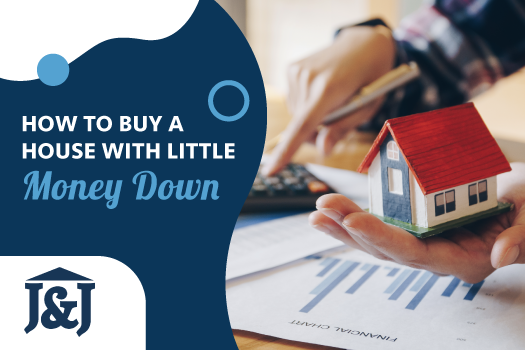Buying a house is a major financial commitment, but taking on the responsibility of a…
What Is A Mortgage Par Rate And How Does It Work?
Every homebuyer wants a low mortgage par rate because it can save them hundreds of dollars a month on mortgage payments. However, par rates are a complicated subject matter for most homebuyers to understand. People want to pay the lowest possible amount in monthly mortgage payments. Here is some fundamental information about par rates and how you can use par rates to your advantage.
What is a par rate?
A mortgage par rate is the standard interest rate calculated by an underwriter based on a borrower’s credit application for a specific mortgage loan. You can think of a par rate as the base interest rate that a lender uses to calculate the interest rate on a mortgage.
When you apply for a mortgage, the lender will look at several factors to determine the par rate for your mortgage. These factors include credit score, down payment amount, debt-to-income ratio, and the mortgage rates at the time of the loan.
Sometimes, your par rate is above or below par, depending on other factors. You may lower the par rate by paying discount points, a one-time fee that you pay the lender in exchange for a lower par rate. Typically, lenders will generate a schedule of standard market rates before calculating the par rate. In some cases, a lender may adjust a borrower’s par rate based on their loan scenario.
Par Rate Example
If you are in the market for a new home and get approval for a $500,000 mortgage with a 5% interest rate with no points or fees, the 5% interest is the par rate. You can adjust the par rate if you feel it is too high or if you want to save money on closing costs.
First, you can purchase discount points to lower the rate. Discount points are a one-time fee equal to 1% of the loan. For example, $5,000 would be the discount point fee on a $500,000 mortgage. A discount point can lower your interest rate by up to one-quarter of a percent.
Second, you can save money by having your lender pay a percentage of the closing cost. Lender credits enable you to spend less on out-of-pocket closing costs. Closing costs include property taxes, mortgage insurance, title insurance, and deed recording fees. In return, the lender can slightly increase your interest rate.
Everyone’s situation is different, so make sure to check in with your mortgage broker to find the best loan for you!
Improving Your Credit
When you are looking to buy a home and need a home mortgage, one of the first things a lender will look at is your credit report. Good credit is an essential factor in getting the lowest possible interest rate on a mortgage. In addition, it will determine the par rate and type of mortgage you can qualify to get.
A mortgage underwriter will evaluate your credit report, income, debts, and employment history to get you pre-approved for a mortgage. They need to determine the type of risk you represent to the lender. The loan you qualify for will likely be subject to a higher interest rate if you have poor credit. Low credit scores can also cause a lender to turn down your mortgage application. Fortunately, there are ways to improve your credit score and lower your mortgage payments. These include:
· Pay down your credit card debt – Reducing your utilization rate is the easiest and fastest way to improve your credit score. For example, if you have a credit card balance of $2,500 and a credit limit of $5,000, you have a 50% utilization rate. You can improve your credit score by getting your credit card utilization rate below 30%.
· Pay your debt on time – Making debt payments on time is essential to improving your credit score. 35% percent of your credit score involves your payment history. You can use budgeting websites or apps to help you keep track of your monthly debt payments. You can also set up automatic payments through your credit card company or bank.
· Check for errors on your credit report – It is good to check your credit report for errors and fraudulent activity. There are several websites where you can get your credit report for free, and you will not be hit with a negative inquiry every time you check your credit. If you find an error, or an account you did not open, you can file a dispute with the three credit bureaus to remove the error.
· Wait for the removal of negative credit items – You may have no choice but to wait to have negative items taken off your credit report. For example, you will have a hard inquiry every time you get an auto loan or a credit card. An inquiry will stay on your credit for two years, and a Chapter 7 bankruptcy will remain on your credit report for ten years. However, your credit score will improve when these items are taken off your credit report.
· Keep a low debt-to-income (DTI) ratio – You should not have excessive debt when applying for a mortgage. Lenders will check to see if your DTI ratio is below 30%. For example, if your monthly income is $5,000, the total amount of your monthly debt payments should not be more than $1,500. If you qualify for a mortgage, your DTI ratio should not be more than 40%, or $2,000. Having a low DTI ratio will improve your credit score and improve your chances of getting a mortgage.
A mortgage par rate is the interest rate you pay for the loan before the lender applies discount points, origination fees, and other loan costs. The mortgage par rate is constantly adjusting. Many factors can determine your par rate when you get approved for a loan.
The par rate the lender offers is the starting point for you to negotiate the final par rate number. You can reduce the par rate and save money long-term or save money upfront by lowering the closing cost. Mortgage lenders in Huntington Beach can help you decide what is best for you.



